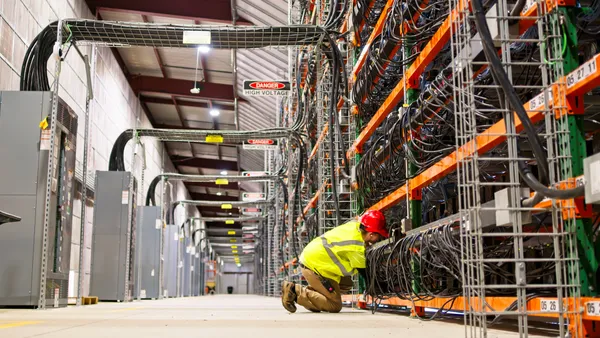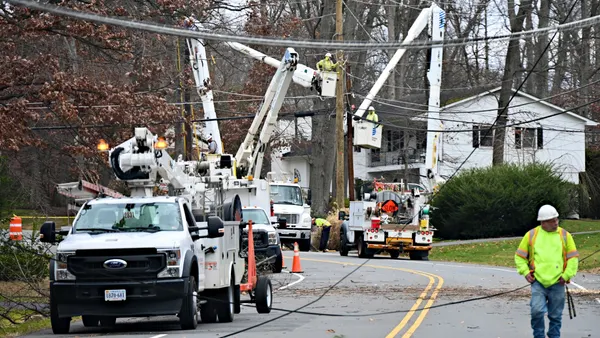Across the country, families are increasingly struggling to pay their utility bills each month, with significant ramifications for health, safety, and customer equity. While utilities and regulators are aware of the problem and are working to help, potential solutions can be complex and challenging to implement. One near-term step could be to leverage detailed and high-interval consumption data that’s already available in most meters, but underutilized for a variety of solvable reasons, to increase customer transparency, improve bill predictability, and provide relevant, actionable, and personalized insights and support.
One of the best available sources of data on energy cost issues is the U.S. Energy Information Administration’s (EIA’s) Residential Energy Consumption Survey, but the most recent available data was collected in 2020, at a time when many states issued moratoria on utility shutoffs or implemented other steps to help customers manage utility bills during the COVID-19 pandemic. Nonetheless, the results are striking: nearly a third of all U.S. households reported having experienced difficulty paying energy bills or needing to keep their homes at an unsafe temperature because of energy cost concerns. Five million households reported that they were unable to use their heating equipment, and 6 million reported that they were unable to use their air-conditioning because they could not afford fuel. Those statistics are even more troubling when considered in face of a changing climate with growing temperature extremes and more severe storms. Nor are these challenges distributed evenly across customer demographics: EIA data suggests that lower income households, households with children, and renters tend to experience the highest levels of energy insecurity, as do households where respondents identify as Black or Latino.
At the same time, energy prices continue to rise due to a range of factors, from increasingly extreme weather and natural disasters to geopolitical conflicts, evolving energy policies, and rate-based infrastructure investments. In fact, rate increase requests by energy utilities in the U.S. hit an all-time record high in 2022. The result is that, according to the National Energy Assistance Directors Association’s (NEADA’s) April 2023 Energy Update, energy prices are increasing on average faster than the rate of inflation, and the cost of winter heating in early 2023 was the highest in more than 10 years. Unsurprisingly, the level of utility consumer debt (money owed by consumers to their utilities) grew by roughly 12% in a single year to a total of $17.8 billion in January 2023—what NEADA believes is the highest level of arrearages ever on record.
There’s no single silver bullet to address these challenges, but utilities could better leverage meter data to help move the needle in a positive direction. For example, granular and high-interval data could be used to:
- Show customers how they actually consume electricity and gas in near-real-time to help them better understand and manage their usage
- Provide mid-month usage or bill forecasts to help customers plan ahead and avoid being surprised by an unexpectedly high bill
- Improve customer segmentation so that utilities can share actionable tips and program offerings that are personalized and relevant to individual customers
- Open the door to performance-based load flexibility where everyone can participate (even if they don’t have smart home gadgets or robust Wi-Fi)
These concepts aren’t necessarily new: smart meters promised to provide some of these benefits back in the late 2000’s. However, despite the potential to make a big impact for many customers, many smart meter deployments have failed to deliver even after a decade or more in the field. Given this lackluster performance, meter vendors and their partners are now advocating for a new generation of smart meters that promise to fix a number of fundamental problems and provide meaningful customer-facing benefits. But replacing millions of expensive meters with new hardware and network infrastructure hardly seems likely to help utilities maintain affordable rates. Plus, a growing vendor focus on grid-edge intelligence within these meters may reduce their effective useful lives, further increasing utility infrastructure investments in the longer-term by creating a more continuous meter replacement cycle compared to previous generations of meters (which often lasted twenty or more years).
In lieu of new meter hardware, what’s needed is a more pragmatic approach that uses the latest technology to help utilities get more out of their existing infrastructure without making customers wait years longer to see the benefits of granular, near-real-time data and personalized insights. With solutions like those offered by Copper Labs, that kind of approach is finally within reach, with or without smart meters. By making the most of readily available usage data, utilities can better support vulnerable customers immediately while continuing to identify and implement deeper solutions in the future.










